 click here for story on Foreign Policy
click here for story on Foreign Policy
International cooperation has stalled. From climate change and trade to nuclear nonproliferation and U.N. reform, macroeconomic rebalancing and development funding -- and the list could go on -- nearly every major initiative to solve the new century's most pressing problems has ground to a standstill amid political gridlock, summit pageantry, and perfunctory news conferences.
We're trapped in a debilitating paradox. People around the world increasingly perceive their interconnectedness and interdependence. In principle, they recognize that this implies a need for closer international cooperation. Yet governance at all levels -- public and private as well as global, national, and local -- is struggling to adapt.
For a moment after the financial crash of late 2008, humanity was seized with the transformational nature of our times. Out of the economic crisis emerged a consensus across governments and the business world that deep reforms were needed in existing systems of international cooperation. This view helped prompt the historic expansion of the G-8, which had been the world's economic steering committee, to 20 countries and the pledge of the new G-20 leaders in London to "lay the foundation for a fair and sustainable world economy."
But as the emergency has receded, so too has the appetite for fundamental reform. Numerous promises made by G-20 leaders remain unfulfilled and might be abandoned outright. They pledged to "take strong action to address the threat of dangerous climate change." They committed to "refrain from competitive devaluation of our currencies and promote a stable and well-functioning international monetary system." They promised to tackle "the social dimension of the crisis" by strengthening safety nets and implementing the International Labor Organization's global jobs agenda. And they vowed to vanquish poverty by "mobilizing all resources for development," particularly through the Millennium Development Goals. Across the board, they haven't done what they said they'd do -- or else come up dramatically short.
Even on financial regulatory reform, where progress has been substantial, many of the most important issues have yet to be fully addressed, from ending the notion of banks that are "too big to fail" to shining a bright light on the murky financial instruments that caused the crisis to giving the international financial system's new watchdog, the Financial Stability Board, the independent authority and capacity it needs to do its job. And on and on.
The world has already paid a severe price for its complacency about well-known systemic financial and macroeconomic risks. It would be a historic error -- a generational abdication of responsibility -- to revert to business as usual. And while we dither, other global risks are accumulating that will surely not be adequately addressed by the weak institutions we now possess, whether the challenges of water scarcity and malnutrition or those of nuclear proliferation and biodiversity loss, never mind the crises of failing education systems and stubborn unemployment or the rapidly expanding threat of chronic diseases and cyberattacks.
But we don't need a big-bang demolition and replacement of the existing international architecture, as some are advocating. Instead, we must recognize that solving problems like global warming and economic imbalances is going to require much more multifaceted solutions than are being contemplated today. The old way of tackling important issues -- holding a summit, issuing a statement, starting a new government program -- no longer cuts it.
THE MODERN INTERNATIONAL system has three main architectural features that were built in stages, one on top of the other. The first and most fundamental is the nation-state, which remains the primary instrument of international relations. The second is alliances among major nation-states, starting with the 1815 Congress of Vienna and manifested today in alliances like NATO and the Association of Southeast Asian Nations. The third is the formal multilateral U.N. system, which was largely constructed in the 1940s in the aftermath of World War II.
Nation-states and intergovernmental structures aren't going anywhere. Countries and multilateral bodies like the United Nations will continue to play a central role in global decision-making (though international institutions should certainly be reformed to better reflect the rising influence of countries like Brazil, China, and India). But they have been overtaken in key respects by the sweeping changes of the past generation. Not only have countries become more economically and environmentally interdependent, but people have, too. Around the globe, they increasingly seek ways to express themselves politically outside formal national governmental channels, whether through NGOs, business trade associations, international media outlets, or virtual professional and social networks on the Internet. They have become more aware that global problems require global trusteeship and that efforts to solve them solely through traditional means -- government to government -- might be inadequate.
We saw that clearly over the last year when we convened the World Economic Forum's Global Redesign Initiative, pulling together more than 50 global task forces to recommend solutions. What they told us varied, but one finding was unequivocal: The international system requires a new round of structural renovation that builds on the previous three. The task this time is not simply to add a new feature. Rather, it is to rewire the connections -- to make them work between old and new, and bottom up as well as top down -- so that the system overcomes the serious limitations of scale, information, and coherence that complex interdependence has exposed in it.
Let's begin with scale. Many of the most crucial collective-action problems the world faces, such as poverty, income inequality, and climate change, require the mobilization of resources on an order of magnitude that far exceeds the capability of governments and international organizations. Private financial flows from rich to poor countries, for example, are already about four times greater than foreign aid, and even this amount is but a small fraction of the funds sloshing around the world in bond and equity markets each year. But institutions like the World Bank have only begun to experiment with partnerships that tap into the far greater power of the private sector and civil society. For this to change, the bank and bilateral aid agencies such as the U.S. Agency for International Development, or even international negotiations like the U.N. climate talks, need to reposition themselves as enablers of solutions rather than direct providers of them. This will require profound changes in their skill base, management culture, and budgetary priorities, which still largely reflect the world as it was in the 1970s, before globalization and the expansion of the private sector took off.
Then there is the information gap. These days, governments and intergovernmental institutions have a hard time simply keeping up with the pace of change. An obvious example is the spread of complex financial instruments like collateralized debt obligations and credit-default swaps -- and we know how that turned out. Even billionaire investor Warren Buffett, who warned to no avail in 2003 that derivatives were "financial weapons of mass destruction," has admitted that he often doesn't understand them. Many regulators and CEOs are equally in the dark, if less candid about it. Or take the U.S. State Department, which relies on NGOs like the International Crisis Group and Human Rights Watch to report on unfolding threats to stability in undercovered parts of the world. Government officials now need to cast a much wider net, systematically embedding themselves in diverse, often informal networks of expertise. They can no longer claim to be paramount authorities in and of themselves.
Finally, coherence is a growing problem. In nearly every organization, public or private, stories abound of one department working at cross-purposes with another. But governmental bureaucracies, by their very nature, tend to put issues in discrete boxes, reflecting their organizational charts instead of the real world. This tendency often produces fragmented, partial, and sometimes even incoherent responses to problems. It is exacerbated by highly fragmented governance. Most international organizations fall under the authority of different ministers who guard their turf jealously. And unlike in a company, there is no single CEO or board to set priorities across the various bureaucracies and drive coordination, even though the issues facing the International Monetary Fund, World Trade Organization, International Energy Agency, and others are highly interconnected. In theory, G-20 leaders could propel this kind of coordination and prioritization. But so far, they haven't.
EVEN IN TODAY'S more complex political landscape, multilateral rules and organizations remain important. But three other modes of international cooperation are also crucial: high-level political commitments and objectives, involving public summit declarations in which leaders invest their personal political capital; pragmatic coalitions of the willing and able, including multiple countries or stakeholders, to make progress where it is most feasible and important; and common information metrics, like Transparency International's Corruption Perceptions Index or the U.N.'s Millennium Ecosystem Assessment, to assist with anticipating risks, shaping priorities, and benchmarking performance.
If the international community focuses only on one of these, it is much more likely to be disappointed with the results. Of course, these individual elements are not new. The novelty is in conceiving of them as a wider ecosystem of international cooperation, a set of modular building blocks that can be assembled in different combinations to improve the performance of the international system on various problems.
What does this mean in practice? Let's take climate change, perhaps the most difficult and important global problem of all, and one where the current international system's failings are on full display.
Over the last few years, the world has lost valuable time by focusing exclusively on getting a new multilateral climate treaty to replace the Kyoto Protocol, whose first set of commitments by developed countries expires in 2012. Even if countries somehow reach a breakthrough, the result likely won't be enough to stabilize the planet's average temperature at 2 degrees Celsius above preindustrial levels by midcentury, as scientists recommend. An unprecedented shift in how we harvest and use energy must take place soon -- during the next 10 to 20 years -- and based on what the political traffic is likely to bear in a 192-country U.N. negotiation, we're not going to make it.
For this reason, the post-Kyoto climate regime should look very different than its predecessor. It should be not only top-down -- a set of quantitative national commitments to reduce emissions -- but also a bottom-up set of mechanisms and initiatives capable of transforming behavior in the most relevant sectors of the world economy over the next 10 to 15 years. Governments must create clarity soon about the successor to Kyoto, but they should be partnering furiously with business and civil society to build enabling institutions that scale the application of efficient existing technologies (and boost research into promising new ones), create alternative livelihoods for communities inclined to convert tropical rain forests to farmland, catalyze private investment in low-carbon infrastructure, and establish common accounting and product-labeling standards that empower investors and consumers to transmit market signals to producers that take full account of carbon-related risks and costs.
In other words, we need a results-oriented, bottom-up economic strategy to complement and enable the more procedural, top-down, political one that environment and foreign ministers have been struggling to create at the United Nations. Because about three-quarters of greenhouse gas emissions are concentrated in four sectors (power, forestry, agriculture, and transportation) and in 20 countries (essentially the G-20), a multilateral agreement is not strictly speaking necessary. But what is urgently needed is a set of public-private mechanisms to dramatically lower our reliance on carbon-intensive technologies. To build them, governments will need to organize themselves more creatively, for instance by bringing their economic teams, not just their environment ministries, to the table.
That kind of interdisciplinary, multidimensional approach could also breathe new life into other tough global fights, from the battle against unemployment and inequality to the struggle to improve education, health, and nutrition in poor countries to the race to save ocean fisheries from collapse. The key is to explore systematically how we can raise our game at every level of the emerging international system.
Here's where the G-20 comes in. Only leaders can compel the various fiefdoms of ministers and the international organizations they lord over to align strategy and systematically tap the expertise and resources of relevant nonstate actors. And only the G-20 combines enough of the most influential leaders to make this happen across the system, even as it is still struggling to contend with the aftershocks of the crisis. The global discussions about climate change, the Doha round of trade talks, IMF and World Bank reform, Millennium Development Goals funding, and macroeconomic rebalancing are all essentially blocked and unable to progress much further within their separate silos. Yet everyone -- developing, emerging, and advanced countries alike -- would be a net winner from their approval. Dwight Eisenhower, in his role as the supreme Allied commander during World War II, once said, "Whenever I run into a problem I can't solve, I always make it bigger." That's exactly what leaders need to do now: assemble a package deal whose political benefit is greater than the sum of its parts.
IN 1944, well before the end of the war but after the tide had turned, the United States hosted a series of discussions at Dumbarton Oaks in Washington, D.C., and in Bretton Woods, New Hampshire. The goal was nothing less than to design the postwar international security and economic architecture. These conferences seem almost quaint six-and-half decades later. They were remarkable not only because they honed ideas that were later adopted formally by governments in the form of the United Nations and the Bretton Woods institutions, but also because of their intellectually expansive and relatively informal nature. Even as governments were busy prosecuting a world war, they assembled teams of people with governmental, academic, and business backgrounds to engage in sustained discussions aimed at drawing fundamental lessons about the failures of prewar cooperation and designing new, more robust, international security and economic institutions.
Now that the worst of the economic crisis appears to be over, it's time to revive the ecumenical spirit of Dumbarton Oaks and Bretton Woods. Even as governments begin unwinding their fiscal and monetary stimulus measures, they need to do some hard thinking about how they can adapt to the sweeping changes that are rapidly passing them by.
The most important factor is going to be willpower. The 1919 Treaty of Versailles is an object lesson in what happens when countries fail to draw the appropriate lessons from history and rise above national interests in the aftermath of an international crisis. The League of Nations illustrates what happens when aspirations for a better world are not accompanied by the appropriate frameworks and resources. The diplomats, academics, and industrialists assembled at Dumbarton Oaks and Bretton Woods were haunted by these failures and determined not to repeat them. They avoided doing so by thinking in structural rather than incremental, and in systemic rather than purely parochial, terms.
The world faces the same basic challenge today. International cooperation is now everybody's business, and it's time for all of us to rise above our immediate preoccupations and consider more seriously our stake in a properly structured and resourced global system for the 21st century. We are more likely to succeed in doing so if we take a practical, multifaceted approach, focusing at least as much on the how as the what. This may prove a difficult challenge. But one thing is certain: We can't keep doing the same old thing.



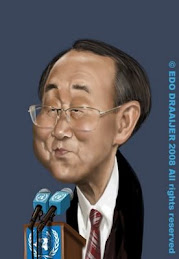

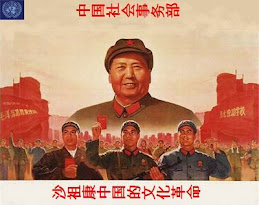










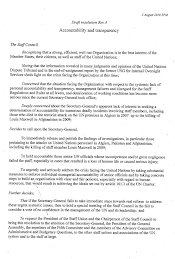

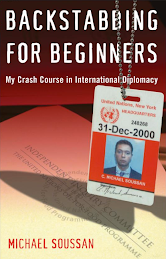
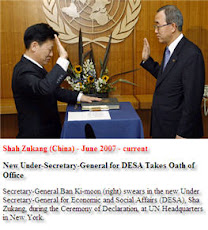

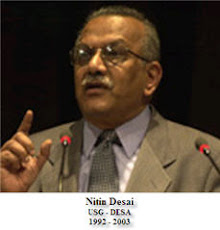
No comments:
Post a Comment